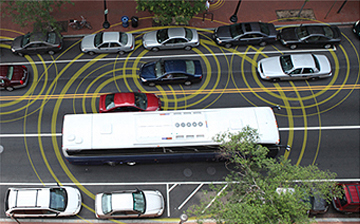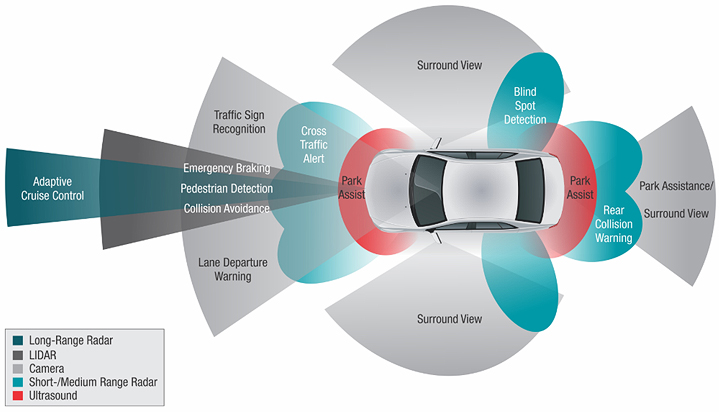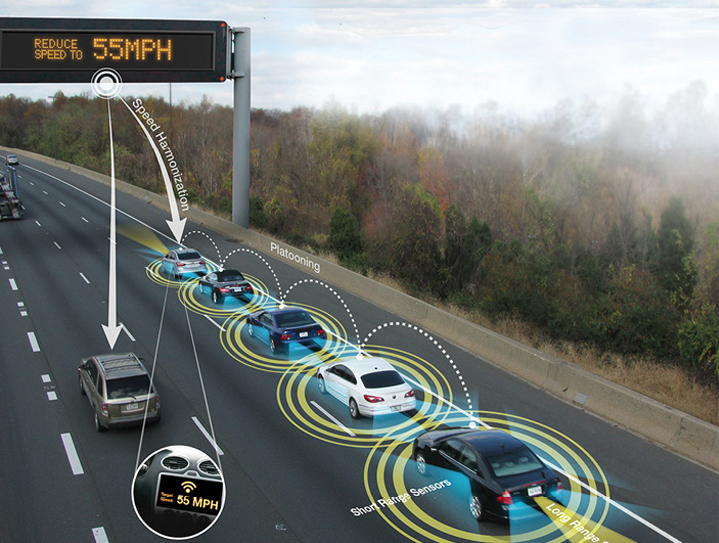Introduction
The quick incorporation of new technologies in the automotive sector will generate a change not only in mobility patterns but also in our lifestyle due to the gradual growth of connected, autonomous and automated vehicles in our roads.
Nowadays, technology is not the key element to achieve a massive deployment of this type of vehicles although it might seem contradictory. Areas such as collaboration between stakeholders, social acceptance, legislation and ethic need to be addressed to make this revolution a success.
We will publish different posts in which we will discuss the factors that will probably foster this technology acceptance and the impacts on the infrastructures with the aim of generating an open debate.
“The object of all discussion should not be triumph, but progress”
Joseph Antoine René Joubert
Name also matters
A priori, the different nomenclatures given to the self-driving vehicle, according to the forum in which we find ourselves, may seem insignificant. As we will see, these small differences condition its use and requirements:
Connected vehicle
The vehicle was one of the few environments that was not connected to the network until very recently; however, the integration of SIM cards in the dashboard of vehicles has meant a change of trend. This fact has implied important improvements in road safety thanks to systems like e-Call that allows the communication of vehicles with the emergency service, mandatory for all vehicles left factory from 2019 onwards.

Source: United States Department of Transportation.
The real potential of the connected vehicle will take place when each vehicle is able to communicate with others (vehicle to vehicle, V2V) receiving accurate and anticipated real-time information about weather, congestion, road cuts and accidents with the aim of making better decisions by the vehicle or driver.
Autonomous vehicle
The powerful automotive lobby has spent years researching how to develop and incorporate on-board vehicle systems that allow total independence from the rest of the elements that make up the transport network. This has led to the vehicles include very sophisticated devices (LIDAR, radar, cameras, ultrasonic sensors, GPS…) which, according to the industry would make it self-sufficient in any situation.
The lack of system redundancy, the risk associated to mixed traffic period1 and the programmed ethics of the vehicle make this technology weak for addressing unforeseen events.So, why has the automobile industry taken this way? Mistrust is the answer for everything:
- Mistrust to the information provided by the infrastructure: slow deployment, unreliable due to the latency2 of communications and, furthermore, only the strategic areas of the network would be sensorized (high standard roads and urban environments)
- Mistrust to other automotive companies: this is a long-distance race and the driverless vehicle is their product of the future, therefore, the less information you need to share with the competitors, the better.
- Mistrust to the telecommunication lobby: The 5G deployment is not expected in all regions of the world in the short term, thus, if their advances depen on it the autonomous vehicle would be delayed in time.
1Mixed Traffic: Coexistence of conventional and autonomous vehicles on the infrastructure.
2Latency is the delayed time that takes place between a communication signal is sent and received.

Source: Automotive Glazing Academy of United Kingdom.
Automated vehicle
As we have seen so far, the research has been aimed at improving the capabilities of the vehicle itself. The sum of the on-board technology, communication between vehicles and connection with the infrastructure is what is called automated vehicle or vehicle-to-everything (V2X). This line of thought reckons that the communication between vehicle and “everything” will mean a radical improvement in security and ease its deployment.
While it is true that the autonomous and connected vehicle seems a feasible and safe solution when 100% of the fleet is, the role of infrastructure will be crucial to guide and to give support to vehicles during the transition period in which traditional and autonomous vehicles coexist.
The collaboration between stakeholders is not entrenched due to the profile and interests of each involved sector are very different. For instance, the infrastructure sector is traditional and has a high public component, which makes it slow to change; however, telecom companies are used to change and have a great capacity to invest in different technologies.
As a result of this new scenario, the road infrastructure faces that its traditional operation could change from being just a “physical provider” to also become a “digital provider”. This change of course has great implications for the sector due to the infrastructure would turn from being a passive element to an “active and service provider” which would lead to handle areas as safety and fleet management.
Are infrastructure operators ready for this change? Do the current PPP models cover these needs? Do the sector need to think about new business models to cover the associated risks? Will the concessional business change when this situation take place?

Source: INFRAMIX – European Project.
Conclusions
To speed-up the deployment and to guarantee the optimal security conditions, the different involved stakeholders are condemned to get along. Thus, more and more consortia are trying to join forces to find and standardize the most efficient and safest systems to deploy on roads.
“If you want to go fast, go alone. If you want to go far, go together”
African Proverb
